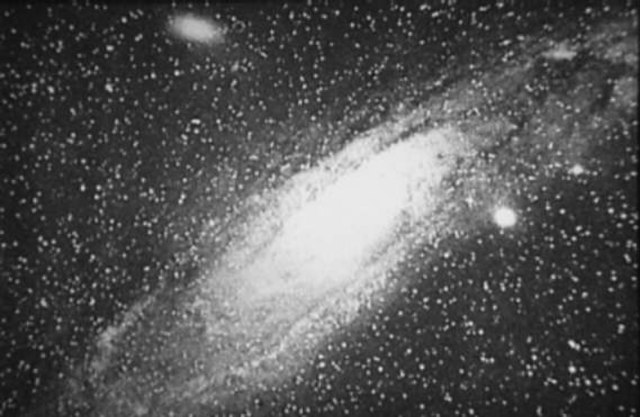An active galactic nucleus (AGN) is a compact region at the center of a galaxy that emits a significant amount of energy across the electromagnetic spectrum, with characteristics indicating that this luminosity is not produced by the stars. Such excess, non-stellar emissions have been observed in the radio, microwave, infrared, optical, ultra-violet, X-ray and gamma ray wavebands. A galaxy hosting an AGN is called an active galaxy. The non-stellar radiation from an AGN is theorized to result from the accretion of matter by a supermassive black hole at the center of its host galaxy.
Quasar 3C 273 observed by the Hubble Space Telescope. The relativistic jet of 3C 273 appears to the left of the bright quasar, and the four straight lines pointing outward from the central source are diffraction spikes caused by the telescope optics.
UGC 6093 is classified as an active galaxy, which means that it hosts an active galactic nucleus.
Image taken by the Hubble Space Telescope of a 5000-light-year-long jet ejected from the active galaxy M87. The blue synchrotron radiation contrasts with the yellow starlight from the host galaxy.
A galaxy is a system of stars, stellar remnants, interstellar gas, dust, and dark matter bound together by gravity. The word is derived from the Greek galaxias (γαλαξίας), literally 'milky', a reference to the Milky Way galaxy that contains the Solar System. Galaxies, averaging an estimated 100 million stars, range in size from dwarfs with less than a thousand stars, to the largest galaxies known – supergiants with one hundred trillion stars, each orbiting its galaxy's center of mass. Most of the mass in a typical galaxy is in the form of dark matter, with only a few percent of that mass visible in the form of stars and nebulae. Supermassive black holes are a common feature at the centres of galaxies.
NGC 4414, a typical spiral galaxy in the constellation Coma Berenices, is about 55,000 light-years in diameter and approximately 60 million light-years from Earth.
Photograph of the "Great Andromeda Nebula" by Isaac Roberts, 1899, later identified as the Andromeda Galaxy
The galaxy cluster Abell 1413 is dominated by this cD elliptical galaxy designated Abell 1413 BCG. It has an isophotal diameter of over 800,000 light-years across. Note the gravitational lensing.
NGC 3923 Elliptical Shell Galaxy (Hubble photograph)







